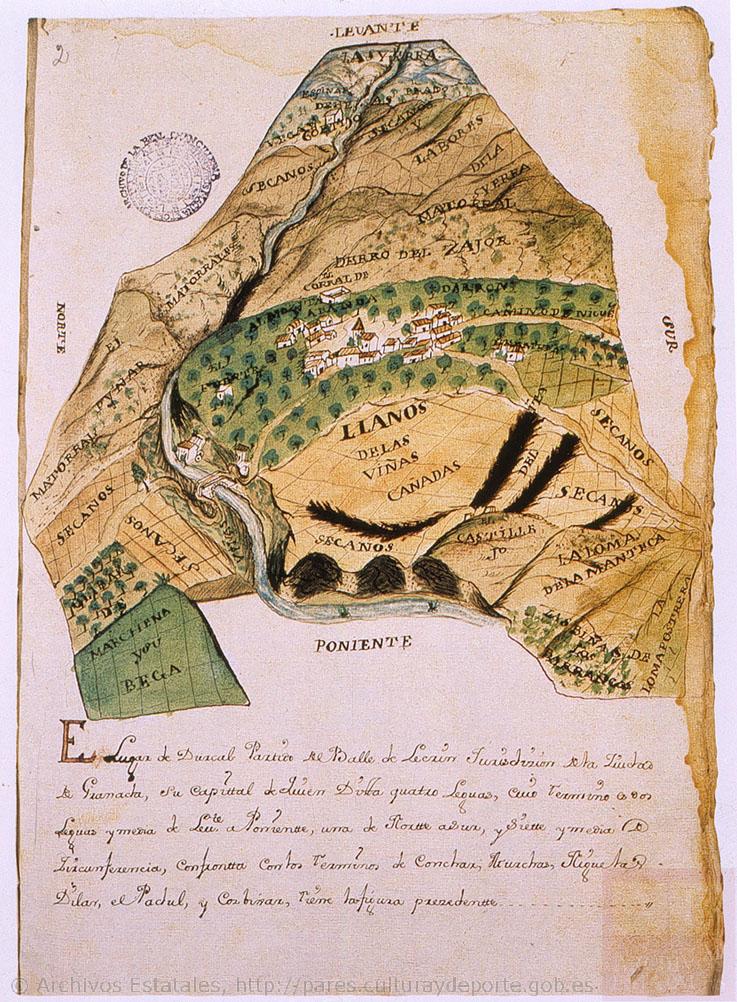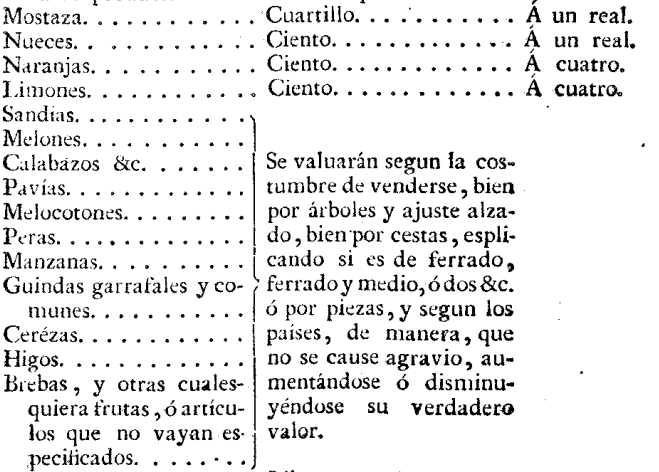
Ancient cadastres as a historical source for the study of vegetables. The Spanish case (1750-1820)
As historical sources, cadastres offer a lot of possibilities to scholar investigators. Fiscal studies about incomes and taxes are the most evident but should be added to these the opportunity to analyse farmer labours, demographical and population conditions or social behaviours about resistance developed by taxpayers. All of this thanks to the data about personal wealth registered in survey books, sometimes accompanied by interesting local maps.
The main motivation for cadastres during Ancient Regime revolves around the knowledge of essential aspects about the population of the State, mainly in respect of their richness with fiscal objectives. Behind that, there are very interesting political aspects from the period we are addressing. Firstly, the wish of a government to better assess their subjects, a change in administrative mentality, in a growing centralization context of modern States that we attend in a good part of Europe throughout the 18th and 19th centuries (so, these projects were essential political acts of affirmation from those States). Secondly, it is possible to see Enlightenment principles like reasoning or accurate apprehension of reality, confronting stagnant structures. That’s why cadastres were seen with distrust by taxpayers.
From a fiscal point of view, cadastres are a necessary precedent to implement changes in a State tax system. Hispanic absolutist monarchy tried to set them in motion in an attempt to rationalize it, which was expensive, slow and needed many intermediaries, causing an important part of the collection didn’t enter in Treasury vaults. According to that wish of simplification, the change of this structure was suggested several times during peace periods, trying to replace those complex and numerous fees by direct charges that levy the wealth of all taxpayers, no matter their social status (direct taxes charge people’s capital and properties while indirect taxes, such as value-added tax, charge transactions and the consume of products). Doing this entailed an obvious requirement for the State: to have the ways to know about and register that wealth. Cadastres can be understood as a tool to reach these objectives but, in a closed society without upwards mobility, dominant groups across Europe always considered the efforts of the State to have a better knowledge about their wealth like an attack on their rights. Their resistance contributes to the collapse of these projects.
Dúrcal map (Granada, Andalucía) from Ensenada Cadastre
Source: Portal de Archivos Españoles. Ministerio de Cultura y Deporte de España
In Spain, as an example, two projects stand out. They reached, despite many obstacles, very important progress in the record of taxpayer’s wealth. Firstly, during the middle of the 18th century, a plan was driven by marquis of Ensenada to impose the Unique Contribution. As a part of the wealth investigation process, it includes not only a cadastre itself but also a survey of 40 questions (called General Responses) with various questions about outputs, economy, commerce or taxes of every settlement in Crown of Castile. By the end of the absolutist period and with the Ancient Regimen crisis in motion, the urgent need for incomes suffered by the crown, immersed in long war conflicts during the century change, joined to that rationalization objective. So, in 1817 the General Property Tax system was approved motivated by the Finance minister, Martín de Garay, applicable to the whole Spanish Iberian territory. As in the previous plan except for minor formal changes, the cadastre that must be elaborated was focused on the inspection of commerce, manufacturing, and especially, territory profits (this last category included incomes from agriculture and livestock activities).
San Miguel de Figueiroa parish outline map (A Coruña, Galicia) from Garay Cadastre, 1818
Source: Betanzos Municipal Arquive, A Coruña
Cadastres are very important historical corpora because they permit, thanks to the agricultural information they contain, the follow-up of many vegetable species. Something related to the significance of land in this period: it happens that we are in organic base agriculture where most of the population lives in rural environments, so, agrarian and livestock activities signify the principal source of income for taxpayers. Being so, Treasury administration principally focuses on those products, inquiring about them on a more rigorously way, because they bear the bulk of the tax. It puts the attention on establishing correct methods for the identification and valuation of that fruits and, doing this, records valuable information about the main agrarian products. This motivation explains why an important part of General Responses of Ensenada is concentrated on vegetable species gathered in a particular territory. It was requested information about agrarian areas (plots assigned to seed cereals, orchards, vineyards, pastures or brushwood, among others), their qualities and areas, if they are irrigated or drain lands, the presence of trees and their arrangement, or the most common types of fruits cultivated on the village. At the time of Garay, the efforts on wealth inquiry are also the cause of land record books being the first elaborated and the most completed, containing similar information according to previous projects.
Worth table of vegetable products from the General Property Tax Council of Santiago jurisdiction. Garay Cadastre, 1818
Source: Minerva, USC Institutional Repository
This way, cadastres offer static photographs of all these facts at the moment they were decreed. Worth tables for the calculation of prices allow to identify main cereals, fruits, or vegetables consumed in local markets, while goods and lands registers show very interesting data about facets of farming and its distribution, sometimes even including very technical or detailed aspects, like the number of trees on a plot. Those data can be used from present days to have a better knowledge of vegetable diversity on family farms in the past, helping investigators to understand and to identify some crops that have gone away over time. One of the main advantages of historical cadastres is, precisely, that they were elaborated before the generalization of industrial or market crops occurred, when some native products hadn’t been displaced by new plant varieties with those objectives yet. Useful information that even gives a better knowledge of the agrarian landscape and its organization.




0 Comments